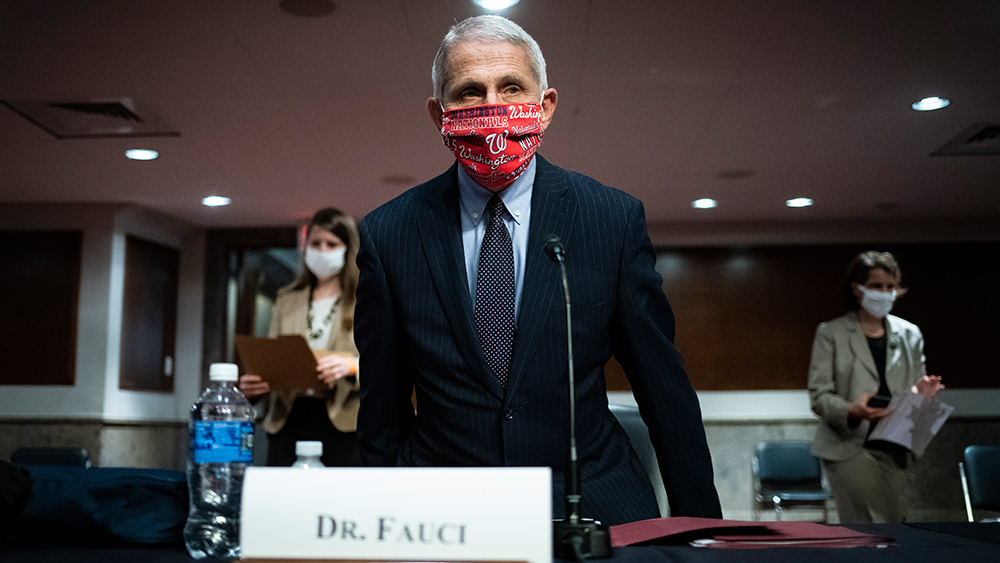WHO to audit Wuhan labs more than a year after pandemic, but China refuses to cooperate
07/22/2021 / By Ramon Tomey

The World Health Organization (WHO) called for an audit of laboratories in Wuhan – more than a year after the onset of the Wuhan coronavirus (COVID-19) pandemic. The global health body’s July 16 call was part of a second phase of investigations into the origins of COVID-19. WHO Director-General Tedros Adhanom Ghebreyesus said that the WHO expects China to “support this next phase of the scientific process” by being transparent with and sharing all relevant data.
The second phase of the WHO’s investigation came after the first phase of its probe in early 2021 failed to secure transparency and information sharing from Beijing. Tedros remarked that the second phase’s key priority will include “audits of relevant laboratories and research institutions operating in the area of the initial human cases identified in December 2019.” Furthermore, he added that WHO investigators will focus on “studies prioritizing geographic areas with the earliest indication of circulation of SARS-CoV-2.”
In addition, Tedros said that the second phase of the WHO’s probe would not only focus on the laboratories in Wuhan. He said that certain residential areas in Wuhan will also be studied. The city’s wildlife and animal markets – including the Huanan Seafood Market – will also be investigated as part of the probe.
A day earlier on July 15, Tedros said it was “premature” to rule out the possibility of COVID-19 emerging from a Wuhan laboratory. His comment walked back on the global health body’s March 2021 report, produced after the first phase of its investigation in Wuhan. It claimed that the lab leak theory of COVID-19’s origins was “extremely unlikely” and argued that SARS-CoV-2 jumped from an animal host to humans – a stance espoused by Beijing.
During the first months of the pandemic, mainstream media largely condemned the theory and called it a “debunked conspiracy.” Nevertheless, scientists and officials still presented evidence in support of the lab leak theory despite criticism and censorship. It was only after U.S. President Joe Biden called for a renewed investigation of COVID-19’s origins in May 2021 did mainstream media sources acknowledge the possibility. (Related: WHO chief FINALLY admits it was premature to discount lab leak theory.)
The writing on the wall points to the lab leak theory
The WHO’s March 2021 report was produced with the input of Chinese scientists working under Beijing’s restrictions. U.S. government officials and a number of scientists questioned China’s influence over the investigation. They noted how Beijing denied scientists access to raw data from early COVID-19 patients.
Because of this, the WHO said on July 15 that it will fix several “unintended errors” in the March 2021 report. It added that it will also clarify that the first COVID-19 family cluster was not linked to the Huanan market.
However, two researchers conducted their own investigation and found that the lab leak theory of COVID-19’s origins was indeed possible. Walden University bacteriologist Yvette Ghannam and researcher Billy Bostickson of the DRASTIC Collective pointed out that shocking conditions in three Wuhan laboratories made it possible for SARS-CoV-2 to escape and infect the city’s population.
Ghannam and Bostickson elaborated on their findings in a 60-page report. They zoomed in on three facilities – the Wuhan Institute of Virology (WIV), Wuhan University (WHU) and the Wuhan Institute of Biological Products (WIBP).
Built in 1996, the 1,216-square meter WIV contained more than 3,200 cages of live animals. Japanese white rabbits, rats, bats and ferrets were some of the animals captured and kept in the WIV for experimentation. This was bolstered by recently released footage of live bats purportedly kept in the facility. (Related: Video reveals Wuhan laboratory kept bats despite claiming it did not.)
The paper also quoted a 2019 report that slammed the WHU laboratories for their lack of safety and chemical waste facilities. It described rooms filled with “lots of debris,” unsegregated common and experiment areas and students not wearing lab coats. Inspectors who penned the 2019 ultimately remarked that the WHU labs were in a “chaotic and crowded state.”
Meanwhile, the report by Bostickson and Ghannam revealed that the WIBP’s sewage and drainage systems were damaged and old – potentially contaminating local canals and creeks. Aside from this, a 2019 tender from the China Testing Network quoted in the report backed up the dismal condition of the WIBP lab. “Some of the equipment and facilities are old, and the instrumentation and control functions … have been damaged, which has greatly affected the normal operation,” the tender said.
The two researchers concluded their paper by saying that the three labs with safety issues “are considered potential sources for accidental leaks, whether within the laboratory or during field sampling expeditions.”
Pandemic.news has more articles about investigations into the origins of COVID-19.
Sources include:
Tagged Under: animal to human transmission, Billy Bostickson, China, COVID-19 origins, covid-19 pandemic, DRASTIC Collective, lab-leak theory, laboratory audit, Tedros Adhanom Ghebreyesus, World Health Organization, Wuhan City, Wuhan coronavirus, Yvette Ghannam
RECENT NEWS & ARTICLES
COPYRIGHT © 2017 BiologicalWarfare.com
All content posted on this site is protected under Free Speech. BiologicalWarfare.com is not responsible for content written by contributing authors. The information on this site is provided for educational and entertainment purposes only. It is not intended as a substitute for professional advice of any kind. BiologicalWarfare.com assumes no responsibility for the use or misuse of this material. All trademarks, registered trademarks and service marks mentioned on this site are the property of their respective owners.




















